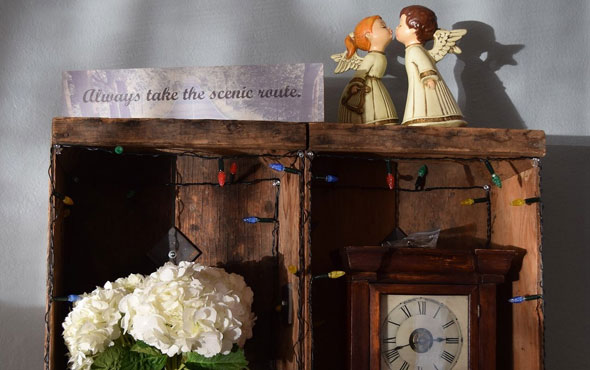Little things that go a long way
For people living with dementia, it can be difficult to retain a sense of identity and to remember important moments from the past. Creating shadow boxes for those in memory care can bring up warm memories and help seniors recall events and people. These memories can stimulate the elder, prompting conversation with family and friends.
Shadow boxes can also help our residents find and identify their apartments. Finding one’s way is an essential ability and a prerequisite for autonomy and independence, reinforcing self-sufficiency and self-esteem. However, spatial disorientation and declining wayfinding abilities are among the symptoms of dementia.
Further, shadow boxes help increase the neuroplasticity of the brain in which nerve cells connect or reconnect, changing the brain’s structure and function when stimulated through the repetition of seeing them. As neuronal connections in these pathways are strengthened and new connections established, individuals with dementia feel comforted and gain an increased sense of belonging.
What to include in a memory care shadow box:
- Letters from people important to them
- Items relating to a hobby
- Items relating to their career or a particular job they enjoyed
- Souvenirs from holidays they enjoyed
- Pictures or postcards of significant places
- Photographs of happy memories
- Tickets from shows, concerts or places visited
The possibilities for such a shadow box are virtually endless. Be creative and collect a variety of memory-stimulating items.




